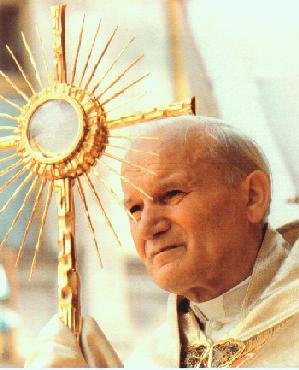The Story
The Romans executed Jesus by nailing his palms to the horizontal beam of a large cross, possibly using ropes to tie his outstretched arms to help support the weight. In some versions his feet are nailed to a small platform. Sometimes there is a small seat.
Historical Facts
Roman Efficiency
The Romans were an incredibly efficient society, concerned about its long-term future.
Whenever they built anything, the Romans built it to last. Even today, there exist roads, bridges, aqueducts, and buildings that the Romans built over two thousand years ago.
Whenever they did anything, the Romans did so as efficiently as possible. Designs were functional, not ornate. A comparison of contemporary Roman and Greek architecture shows the Greeks creating fluted columns, elaborately carved capitals, and various decorative features, with the Romans having a very utilitarian style, everything plain and simple, with all shapes being rectangles or circles.
Crucifixion
Crucifixion wasn't invented specifically for Jesus; it was a very common method of torture and execution throughout the Roman Empire. There were times when literally thousands of people were crucified at a time, their tortured bodies hanging in one long row along the side of a heavily travelled road.
The crosses typically depicted throughout the modern Christian world would have been far too large, far too heavy, and far too complicated for the Roman army to use. Fitting and binding the two pieces together would have required a significant amount of work. For the Romans, form followed function, and for this purpose there was simply no need for a complicating crossbar.
One simple vertical pole was all that was needed.
Similarly, there is no way that Roman soldiers would have put nails through a prisoner's palms. The weight of the body could have ripped the nails up through the hands, and remounting them would have been too much trouble. The modern concept of using rope to support the weight would also have been an added complication, not to mention that devising something to compensate for a poor basic design would have been seen as inefficient.
A single nail, driven between the wrist bones of the prisoner's crossed hands would have been far more efficient.
The nail would never tear out, and the pressure of the nail on the nerves in the end of the wrist (like banging one's funny-bone) would have added to the torture.
One could relieve that pressure by supporting one's weight by the legs, but it would be very tiring to do so.
Yet relaxing the legs would cause excruciating pain.
(The word excruciating
has the same origin as crucifixion
.)
The mental stress of deciding between leg support and wrist pain makes the crucifixion process even more effective in terms of torture.
Yes, there were times when fancy elaborate devices were used to crucify special people or used at special events, but it was only to enhance the entertainment value.
One king, for instance, was crucified on a specially constructed X
-shaped cross.
But for the vast majority of people, a simple pole with a single nail through the crossed wrists and one in each ankle got the job done.
The Bible
While some translations (e.g. New World Translation) use expressions like torture stake
, most English translations of the Bible refer to Jesus's execution device as a cross
.
The original Greek word is stauros
(σταυρός), which simply means an upright wooden stake, and has no connotation of having a crossbar.
Jesus, or anyone else, couldn't possibly have carried anything like the large and often elaborate cross we see depicted in churches, books, and films. Nor was he forced to carry only the crossbar, as some people now rationalize the event. The same Greek word is used for what he carried as is used for the execution device.
Even if the Romans had thought of Jesus as deserving special treatment because of who he was (which they didn't), they obviously didn't bother. Jesus was crucified alongside two other criminals, with nothing mentioned indicating that his stake was any different from the other two.
The soldiers were asked to break the legs of the three criminals so that they would die much sooner allowing them to be buried before the Sabbath began at sunset. The leg breaking would speed up the death because the entire body weight would then be on the single nail between the crossed wrists. The pain would be intense and continuous, and any false hope provided by leg support would be gone.
Why
There is nothing recorded in the first few centuries to indicate a cross-shaped execution device, so where did this iconic shape originate?
In 312CE, when the Roman emperor Constantine won the battle of Milvian Bridge, he saw a cross of light and the message In this sign you shall conquer
.

This might have been the meteorological phenomenon known as a sundog: vertical and horizontal beams of light centered around the sun with four similar but smaller crosses occurring on a ring of light surrounding the sun.

Even today, many Roman symbols of the cross look much like this phenomenon.
From ancient times, cross symbols had been used by many cultures to represent the Sun. Constantine was a sun worshipper, so invoking the power of the Sun god in battle would have been a natural thing for him to do. The Emperor ordered his soldiers to put the cross symbol on their shields in all future battles.
Over the next decade, because his mother had become interested in Christianity, Constantine relaxed the official persecution of Christians, and began to see the potential usefulness of that cult. He gradually incorporated Christian terminology into the Roman religion and convened councils to set doctrine, including making Sunday, the day of the Sun, the official day of rest for Christians. Later he outlawed the Biblical holidays and declared that the Roman celebrations that we now know as Easter and Christmas must be celebrated instead.
It was a simple matter to say that the device of Jesus's execution was a cross, and the Latin cross, the sign of the Sun, became the official emblem of Roman Christianity.
This transition is supposedly supported by Malachi 4:2, which, when considered as a messianic prophecy, refers to Christ as the sun of righteousness
.
It wasn't until 25 years after his original Sun vision, and years of redefining Roman religion, that Constantine himself finally converted to what was by then called Christianity
.